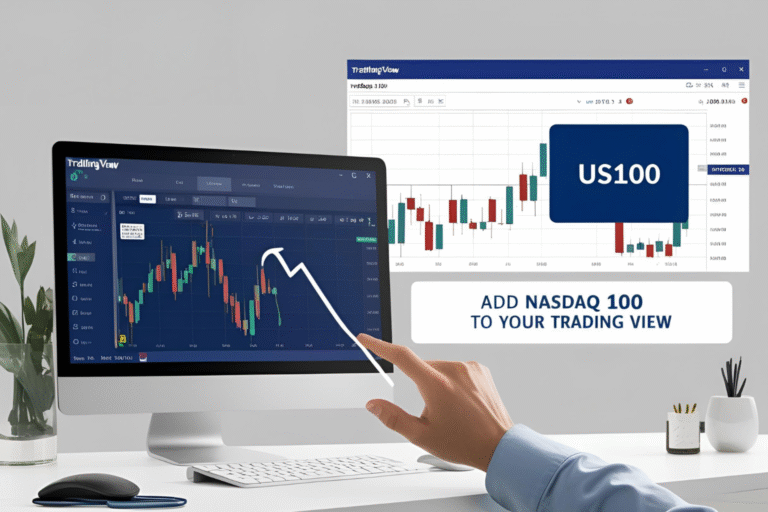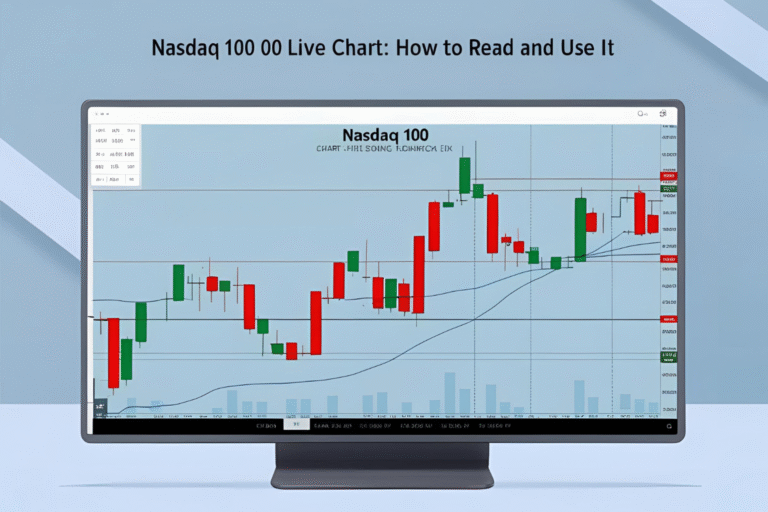Nasdaq 100 PE Ratio: What It Means for Investors
The Price-to-Earnings ratio (PE ratio) is one of the most widely used valuation metrics in stock market analysis. When applied to a major index like the Nasdaq 100, it helps investors understand how expensive or cheap the market is relative to earnings.
In this article, we’ll break down what the Nasdaq 100 PE ratio is, how it’s calculated, and how to interpret it for smarter investment decisions.
What Is the PE Ratio?
The PE ratio is a simple formula:
PE Ratio = Price per Share / Earnings per Share (EPS)
For an index like the Nasdaq 100, the ratio is calculated by taking the weighted average PE of the companies in the index.
Why the Nasdaq 100 PE Ratio Matters
The PE ratio gives you insight into:
- Market Valuation: Whether the index is overvalued, undervalued, or fairly priced
- Investor Sentiment: A high PE may signal optimism; a low PE might reflect caution
- Growth Expectations: Higher ratios are common in growth-focused indices like the Nasdaq 100
Historical Context of Nasdaq 100 PE Ratio
- During tech bubbles or bull markets, the PE ratio tends to rise
- In bear markets or recessions, the ratio often drops as earnings fall or prices adjust
- The Nasdaq 100 typically has a higher PE than the S&P 500 due to its heavy tech exposure
As of early 2025, the Nasdaq 100 PE ratio is approximately in the range of 25–30, reflecting strong growth expectations.
Interpreting the PE Ratio
| PE Ratio Level | Interpretation |
|---|---|
| Below 15 | Possibly undervalued (or facing earnings risk) |
| 15–25 | Fairly valued based on historical averages |
| Above 25 | Growth priced in or overvalued; proceed with caution |
Keep in mind: High PE does not always mean overvalued—growth companies naturally carry higher valuations.
Where to Find Nasdaq 100 PE Ratio Data
You can check real-time or updated Nasdaq 100 PE ratios on:
- Nasdaq.com (official data source)
- Yahoo Finance (Index: NDX)
- Morningstar or GuruFocus
- ETF pages like Invesco QQQ – look at the weighted average PE of ETF holdings
How Investors Use It
- Long-Term Investors: Use PE ratio to decide if it’s a good time to enter or wait for better valuations
- Fundamental Analysts: Combine with other metrics like PEG, price-to-sales, and earnings growth
- ETF Investors: Compare PE of QQQ or QQQM to broader indexes like the S&P 500
Final Thoughts
The Nasdaq 100 PE ratio is a valuable indicator of how the market values tech-driven growth. While not a perfect tool on its own, it provides essential context for timing investments and understanding risk levels in the current market environment.
FAQs
What is the current PE ratio of the Nasdaq 100?
It fluctuates but typically ranges from 25 to 35 depending on earnings and market performance.
Is a high PE ratio bad?
Not always. It often reflects high growth expectations, especially in tech sectors.
How often does the Nasdaq 100 PE ratio change?
It changes daily as stock prices and earnings reports are updated.
Do ETFs like QQQ show PE ratio?
Yes, ETF providers often display the weighted average PE of the fund’s holdings.
Can PE ratio predict a crash?
No, but extreme valuations can signal potential corrections or overbought conditions.



